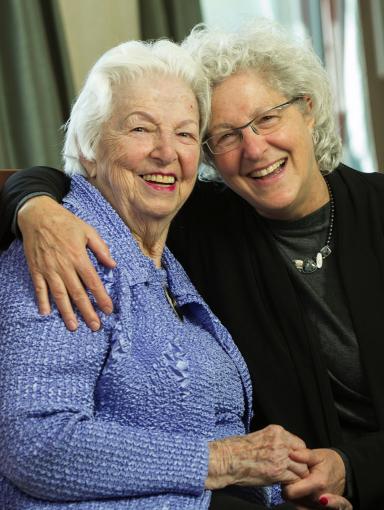Class of Alzheimer’s Drug Presents Unique Challenge for Patients With Cardiovascular Disease, Says JAMA Article
Authors advocate for additional research to improve decision-making before initiating lecanemab
BOSTON – A new Viewpoint article published in JAMA, entitled “Use of Lecanemab for Patients with Cardiovascular Disease – The Challenge of Uncertainty,” advocates for additional research to improve decision-making prior to initiating lecanemab, commercially known as Leqembi, an FDA-approved Alzheimer’s Disease drug.
Co-authors of the Viewpoint included:
- Darae Ko, M.D., MSc, cardiologist and researcher at Hebrew SeniorLife’s Hinda and Arthur Marcus Institute for Aging Research and member of the Faculty of Medicine at Harvard Medical School
- Alvaro Pascual-Leone, M.D., Ph.D., medical director at Hebrew SeniorLife’s Deanna and Sidney Wolk Center for Memory Health, senior scientist at the Marcus Institute, and professor of neurology at Harvard Medical School
- Sachin J. Shah, M.D., MPH, physician investigator at the Center for Aging and Serious Illness and Division of Internal Medicine at Massachusetts General Hospital and assistant professor of medicine at Harvard Medical School
Advanced care planning prior to initiation of lecanemab and other antiamyloid monoclonal antibodies (mAbs) approved in the future is important so that clinicians, patients, and their families are fully aware of the unknowns, especially for patients with cardiovascular disease that may require anticoagulants or thrombolytics.
The authors note that “in the initial phase of the drug rollout, patients are being carefully selected to minimize the potential side effects of the drug (but) a major safety concern … has been amyloid-related imaging abnormalities (ARIA), the most concerning of which is cerebral macrohemorrhage.” Dr. Ko said that “the risk was higher in patients on anticoagulation.”
Antithrombotic therapy presents a unique challenge for patients considering some Alzheimer's drugs. In their Viewpoint, the authors note that in approving lecanemab, the FDA did not advise regarding the risk of concurrent anticoagulation therapy, and that “the Alzheimer’s Association’s Therapeutics Work Group took a more conservative approach and recommended that persons with cerebral amyloid angiopathy and those currently prescribed anticoagulants should not be candidates for lecanemab because the risk of bleeding outweighs the potential benefit.”
“We anticipate that three common acute clinical conditions – ischemic stroke, myocardial infarction, and pulmonary embolism – for which treatment with thrombolytics and anticoagulation are critical and clinical decisions must be made emergently, will be particularly challenging in patients treated with antiamyloid mAb and will require careful advance directive conversations with patients,” they wrote in the paper.
Decisions regarding the use of lecanemab, an important advance in the treatment of Alzheimer’s, are currently based on limited safety data. “To meet this challenge,” the authors note, “there is a pressing need to create multidisciplinary treatment teams for Alzheimer’s Disease, develop shared decision-making models for advanced care planning, and produce the empiric data needed to guide treatment decisions.”
About Hebrew SeniorLife
Hebrew SeniorLife, an affiliate of Harvard Medical School, is a national senior services leader uniquely dedicated to rethinking, researching, and redefining the possibilities of aging. Hebrew SeniorLife cares for more than 4,500 seniors a day across six campuses throughout Greater Boston. Locations include: Hebrew Rehabilitation Center-Boston and Hebrew Rehabilitation Center-NewBridge in Dedham; NewBridge on the Charles, Dedham; Orchard Cove, Canton; Simon C. Fireman Community, Randolph; Center Communities of Brookline, Brookline; and Jack Satter House, Revere. Founded in 1903, Hebrew SeniorLife also conducts influential research into aging at the Hinda and Arthur Marcus Institute for Aging Research, which has a portfolio of more than $85 million, making it one of the largest gerontological research facilities in the U.S. in a clinical setting. It also trains more than 500 geriatric care providers each year. For more information about Hebrew SeniorLife, visit our website at or follow us on our blog, Facebook, Instagram, Threads, and LinkedIn.
About the Hinda and Arthur Marcus Institute for Aging Research
Scientists at the Marcus Institute seek to transform the human experience of aging by conducting research that will ensure a life of health, dignity, and productivity into advanced age. The Marcus Institute carries out rigorous studies that discover the mechanisms of age-related disease and disability; lead to the prevention, treatment, and cure of disease; advance the standard of care for older people; and inform public decision-making.
